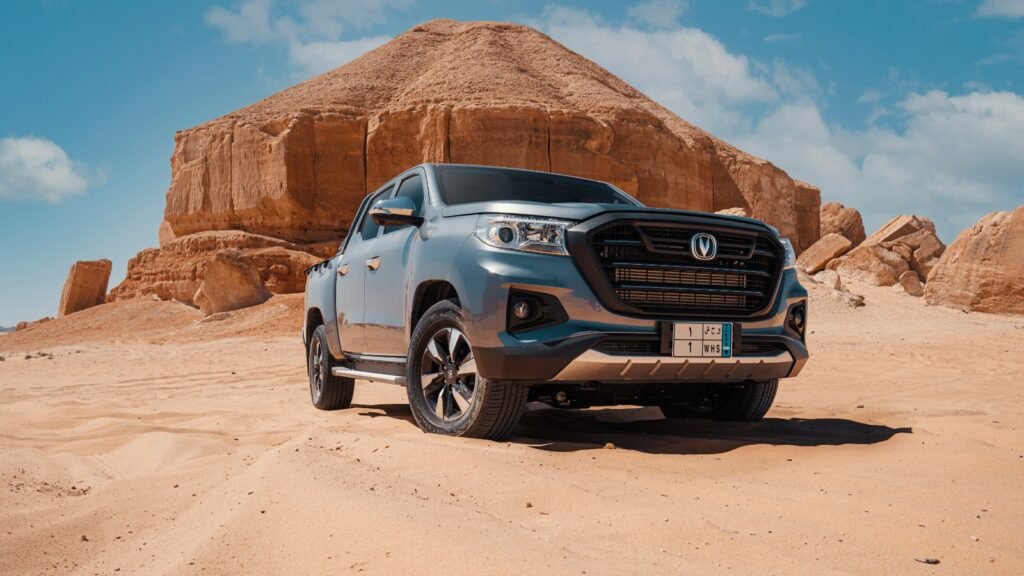In the past few years, there has been a visible change in the Saudi Arabian automobile market, and gradually, the Chinese car manufacturers have made their presence felt. Their success is largely driven by one crucial factor: competitive pricing of Chinese cars. By offering vehicles that combine affordability with advanced features, Chinese brands have managed to carve out a substantial share of the market, challenging traditional players from Japan, Korea, and the United States.
Understanding the Appeal of Competitive Pricing
In a market where consumers are increasingly price-sensitive, the competitive pricing of Chinese cars has proven to be a game-changer. Chinese manufacturers have strategically positioned their vehicles at price points that are often 20% to 30% lower than their Japanese or Korean counterparts. This pricing strategy has made it possible for a wider range of consumers, including middle-income earners, to access new cars that were previously out of their budget.
A medium-sized Japanese sedan in Saudi Arabia typically costs between 110,000 and 130,000 SAR ($29,000 to $34,000), while a similarly sized Chinese car is priced between 70,000 and 80,000 SAR ($18,000 to $21,000). Despite the lower price, these Chinese vehicles often come equipped with more advanced features, such as state-of-the-art infotainment systems, enhanced safety mechanisms, and superior air conditioning—features that resonate well with Saudi consumers who expect value for money.
Quality and Perception: Overcoming the Stereotypes
Historically, Chinese products have faced skepticism regarding their quality. However, this perception has changed significantly in recent years, particularly in the automotive sector. The competitive pricing of Chinese cars is no longer seen as a compromise on quality. Instead, consumers are recognizing that these vehicles offer a robust balance of cost and functionality. Brands like Changan, Geely, and MG have invested heavily in research and development, ensuring their vehicles not only meet but often exceed the expectations of Saudi drivers.
The improvements in design, safety standards, and technology have contributed to a growing trust in Chinese cars. Additionally, the ability to provide reliable after-sales service through strong partnerships with local distributors has further bolstered consumer confidence. As a result, the once prevalent concerns about durability and reliability are fading, making room for a new narrative—one where Chinese cars are considered a viable and attractive option in the Saudi market.

Strategic Market Positioning and Distribution
Another critical factor contributing to the success of Chinese cars in Saudi Arabia is their strategic market positioning. By forming alliances with established local distributors, Chinese manufacturers have ensured that their vehicles are widely available and supported by reliable after-sales services. These partnerships are essential for maintaining a steady supply chain and providing customers with the assurance that their vehicles will be well-maintained.
From a broader GCC perspective, particularly in the UAE, a similar trend is unfolding. The UAE market, known for its high standards and consumer demand for luxury, has also seen an uptick in the presence of Chinese cars. While the UAE market has its unique dynamics, the core appeal of the competitive pricing of Chinese cars remains a common denominator. This trend suggests a regional shift where Chinese manufacturers are not only competing but winning in markets traditionally dominated by more established brands.
The Future Outlook
As Chinese automakers continue to refine their strategies, focusing on affordability, quality, and technological innovation, their market share in Saudi Arabia is expected to grow. The competitive pricing of Chinese cars will likely remain a cornerstone of their success, enabling them to reach even more consumers and solidify their position in the market. For Saudi buyers, this means more options and better value, while for the broader GCC region, it indicates a shift towards a more diversified automotive market landscape.

